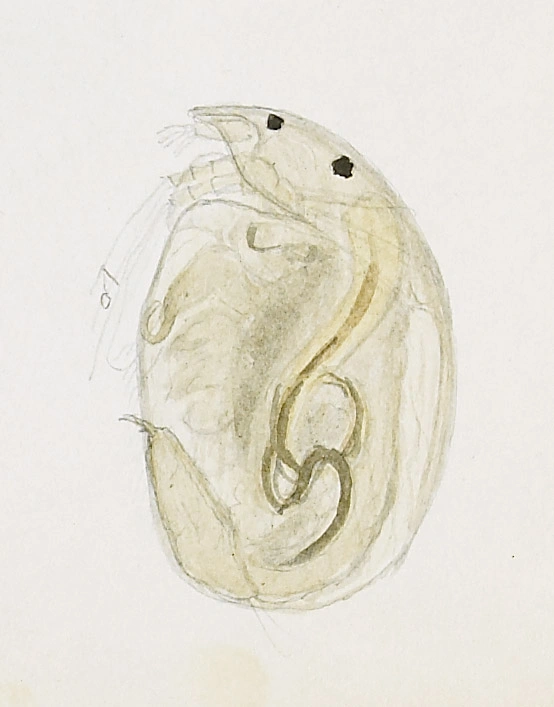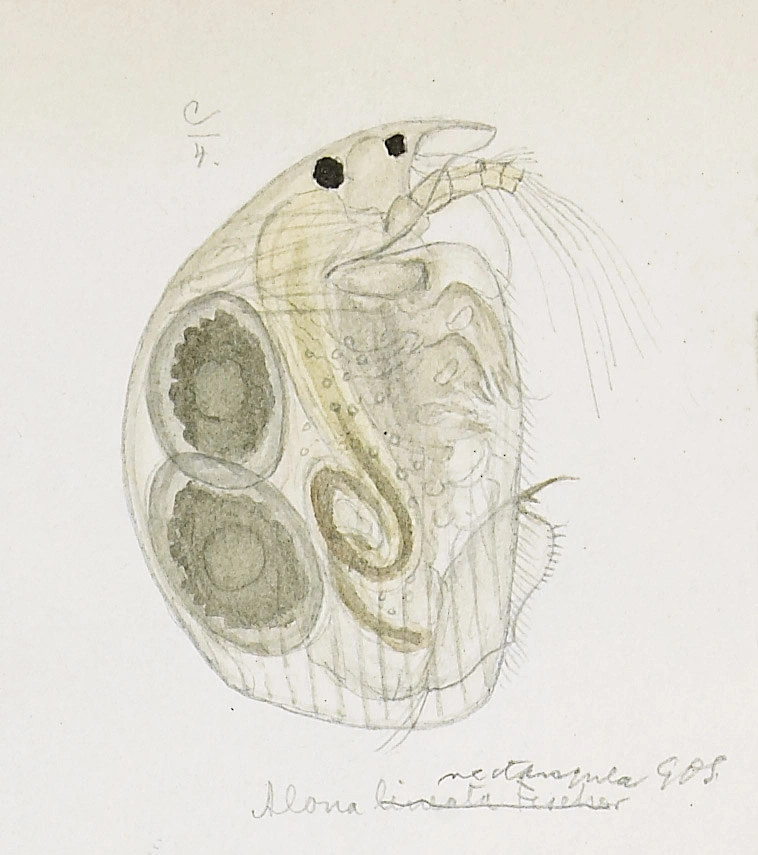Alona guttata
Alona guttata is the smallest species in the genus Alona. It is a common littoral species, widely spread throughout the country, including Svalbard, being pH-tolerant and found in both clearwater lakes as well as in small nutrient rich ponds.
Key characteristics
Alona guttata (female)
Alona guttata (male)
The habitus of Alona guttata is quite similar to A. rectangula but it is considerably smaller. Right from the tip of the rostrum, the completely dorsal edge of the shell forms an evenly curved arch. The shape of its postabdomen is characteristic and ends in a rather strongly protruding, sharp corner. There are 8–10 short but strong denticles on each side of the postabdomen. Its carapace is fully punctuated and is rather transparent with a touch of green/brownish colour.
Female: Length 0.3–0.5 mm
Male: Length 0.3–0.4 mm
Ecology and distribution
A. guttata is a quite common littoral scraper found in 27 % of the water bodies sampled. It is widely spread throughout the country, including Svalbard, from the coast to the alpine zone (1355 m a.s.l.), with its highest frequency between 100 and 300 m a.s.l (41 %). It occurs in localities of all sizes. Differences in pH do not seem to affect the occurrence of A. guttata, which has been found in localities with pH ranging from 3.9 to 9.9. The frequency of records of A. guttata increase with increasing levels of electrolytes in the water.
| Vitenskapelig navn | < 4,5 | 4,5 - 4,9 | 5,0 - 5,4 | 5,5 - 5,9 | 6,0 - 6,4 | 6,5 - 7,0 | 7,0 - 7,4 | > 7,5 |
|---|---|---|---|---|---|---|---|---|
| 14 | 40,9 | 26,3 | 31,5 | 27,5 | 24 | 30,7 | 35,7 |
| Vitenskapelig navn | < 1,0 | 1,0 - 1,4 | 1,5 - 1,9 | 2,0 - 2,9 | 3,0 - 3,9 | 4,0 - 4,9 | 5,0 - 6,9 | 7,0 - 9,9 | > 10,0 |
|---|---|---|---|---|---|---|---|---|---|
| 7,3 | 15,4 | 21,6 | 29,4 | 31,2 | 37,7 | 37,1 | 38 | 41,4 |
| Vitenskapelig navn | < 0,01 | 0,01 - 0,09 | 0,1 - 0,9 | 1,0 - 9,9 | 10,0 - 99 | 100 - 999 | > 1000 |
|---|---|---|---|---|---|---|---|
| 22,5 | 22,9 | 23,5 | 31,3 | 26,1 | 24,6 | 30,4 |
| Vitenskapelig navn | < 100 | 100-299 | 300-499 | 500-699 | 700-999 | >1000 |
|---|---|---|---|---|---|---|
| 31,5 | 41 | 28,4 | 15,1 | 13 | 1,8 |
Look-alikes
Alona costata, A. rectangula and A. rustica




